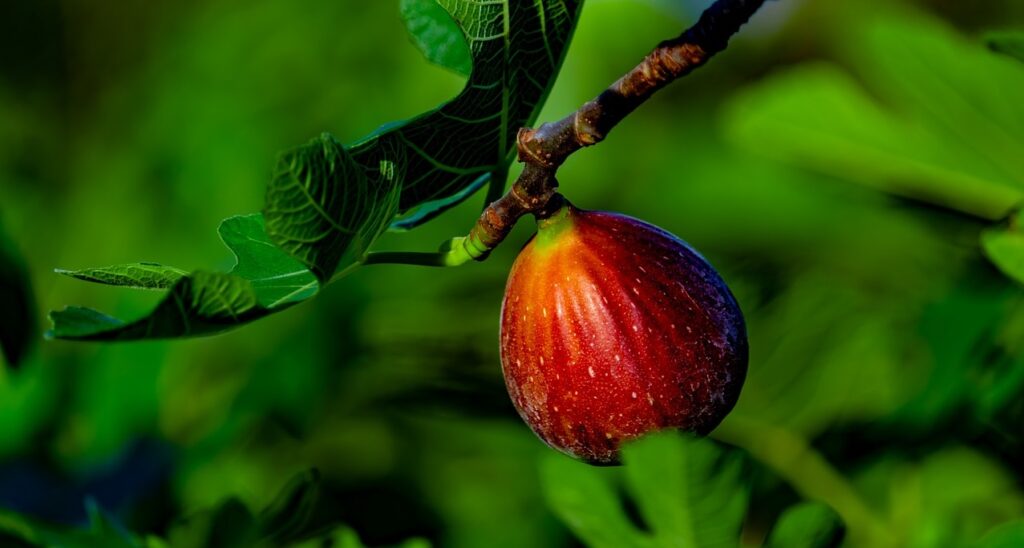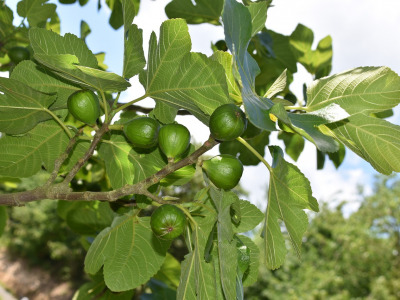

You Don’t Know Top 5 Benefits of Fig (Anjeer)
In this post, we will know all about Fig (Anjeer) plants
- About fig plants
- How to grow in a flowerpot
- Best caring tips
- Flowering season
- Benefits of anjeer
About Fig Plants: Fig plants or common fig is the flowering plants in the family of Moraceae. It is native to Western Asia. Ficus carica plants give fruits which are called fig fruit (eatable). The scientific name is ficus carica, and it belongs to the Moraceae family. Over time, plants grow up to 15 to 20 feet tall and spread up to 15 feet wide.
How to Grow Fig in Flowerpot: There are three methods for planting fig plants in the home or garden. One method is by using seeds, another is by using cutting, and the last one is grafted. Seeds methods take lots of time for germination (at least 30 days), and the cutting method takes 5 to 7 days for new germination. The grafted plantation is simple and reliable with minimum care. In this post, we will know seeds plantation and cutting methods.
Best Season for Plantation: Summer is the best time for plantation. Seeds are small, and keep the seeds in water for one day (if seeds are not removed from the fig); otherwise, you can buy seeds from online stores and local nurseries.
Prepare a Soil Potting and Planting Seeds: To make a soil mixture, take well-drained garden soil (50%) and sand (25%), and coco peat (25%). Mix it well and take the medium size of the flowerpot (size at least 8 to 10 inches wide).
- Fill the soil mixture into the flowerpot.
- Take out the seeds from the water.
- Spray seeds on the soil mixture and cover the seeds with some soil mixture.
- Give some water and place the flowerpot in a semi-shaded location or indirect sunlight.
Within 20 to 30 days, germination starts from the seeds, and 2 to 3 new leaves appear from the plants. Most of the time, many seeds do not germinate, or 5 to 6 seeds may germinate out of 30 seeds. If plants grow up to 5 to 6 inches, then we can transplant them into the new flowerpot.
Remember while Plantation: USDA hardiness zone should be 4-10, and soil mixture should be slightly acidic to neutral. In a flowerpot, make sure drainage holes are available or not. If there are no holes at the surface, then make 5 to 9 holes (Drainage holes are necessary). Cover the holes with a grenade or stones. Use a clay flowerpot. The distance between the seeds should be 1 to 3 cm, and the seeds do not overlap.
How to Transplant: For transplantation, use garden soil (50%) and sand (20%), and coco peat or vermicompost (30%). Mix it well and create a small flowerpot (size at least 5 to 6 inches). Remove all the plants from the old flowerpot and plant 3 to 4 inches deep in a new flowerpot.
Planting Cutting of Fig: Take the same soil mixture with the medium size of the flowerpot. Dig a hole (4 to 5 inches deep) and put the cutting into those holes. Cover the rooting part with soil mixture and give water properly.
Best Caring Tips
- Watering: During the summer season, give water properly or after 1 to 2 days. Keep moisture in the soil potting before the seeds germination does not give water in the winter season.
- Temperature: Place the plants in indirect sunlight or semi-shaded location. After transplantation, keep the plants in full sunlight (winter season).
- Best Fertilizer for Fruiting: Cow dung is the best fertilizer for fig plants. Give fertilizer after 30 to 45 days.
- Pruning: Prune the plants before the growing season (March to April). Pinch out the faded flowers, dry leaves, unwanted branches, and heads of stems. Remove all the baby plants near the rooting system.
Flowering & Fruits Season: Within 7 to 8 months, flowers start blooming on the plants, and these flowers are red in colour with lots of stigmas. After flowering, fruits begin. These fruits are sweet in taste with round shapes. The size of fruits grows up to 1 inch, and flowers grow up to 2 to 3 inches with spread up to 12 inches.
Benefits of Fig (Anjeer): There are loads of benefits of anjeer, but we are showing only the Top 4 Benefits for your health
- Figs have lots of calcium and potassium.
- Improve skin problems.
- Control blood sugar.
- It may improve heart health.
If you like this post, don’t forget to share it with your friends and relatives and subscribe to my newsletter for the instant update 🙂


Click to Read More Interesting Post 🙂
Choose Your Favorite Tag 🙂
air purifying plants almonds aloevera Bougainvillaea broccoli Cardamom carrot cauliflower Cultivation or farming Daisy flowering plant Dark green chilli Dry fruits Flower plants Fruit plants Gardening hacks Gardening ideas Genus tree Green chilli hanging plants health health tips Indoor flowering plants kitchen plants latest plants latest posts Lilies onion pea peace lily perennial plants plantation ideas plants sacred tree spices spices and herbs summer flower caring summer flower plants Summer fruit plants sunflower tea tips and tricks tree vegetables vine winter flower plants







































































